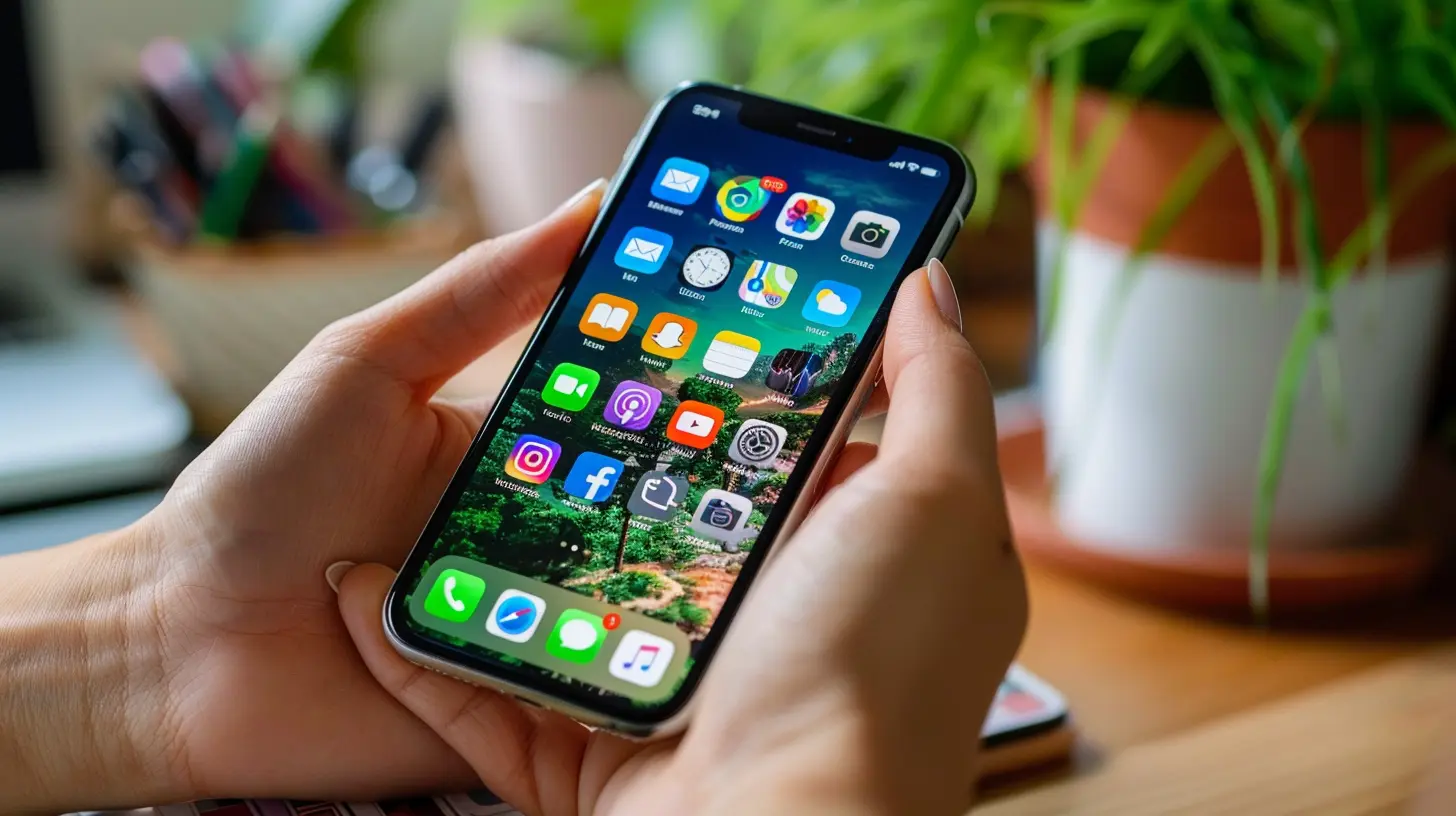The Ultimate Guide to Building Scalable Mobile Apps
24 November 2025
So, you've got a killer app idea? Awesome. But here’s the thing: building an app that just works isn’t enough anymore. You’ve got to build one that grows with your users, handles traffic like a pro, and doesn’t crumble under pressure. That, my friend, means building a scalable mobile app.
Let’s be real—scaling is one of those fancy tech words that sounds more complicated than it really is. Think of it like this: if your app were a pizza place, scaling would be making sure you can go from serving a dozen hungry locals to feeding an entire city's worth of pizza lovers without burning the crust or running out of pepperoni.
In this guide, we’ll walk through what makes an app scalable, why it matters big-time, and how you can make sure your mobile app is ready to handle the heat when your user base explodes.
🌱 What Does “Scalable” Really Mean?
Let’s keep it simple. A scalable mobile app is one that performs well even when the number of users, data, or interactions grows significantly. Instead of slowing down or crashing, it adapts and keeps doing its thing smoothly.Now, scalability isn’t just about throwing more servers at the problem. It's about smart coding decisions, solid architecture, careful planning, and keeping your users in mind every step of the way.
🧠 Why Should You Care About Scalability?
Here’s why you can't afford to ignore scalability:- User expectations are sky-high. If your app lags or crashes, users won’t wait around. They’ll uninstall and find something better—fast.
- Growth sneaks up on you. You may start with 100 users, then wake up one day with 100,000. Will your app be ready?
- Revenue relies on reliability. Downtime can equal lost dollars, angry users, and bad reviews.
- It’s expensive to fix later. Trust me, patching a broken foundation AFTER launch is like trying to remodel your house after it’s already on fire.
🛠️ Laying the Foundation: Choose the Right Tech Stack
Before you even write your first line of code, picking the right tech stack sets the tone for growth.Mobile Platforms: Native vs Cross-Platform
- Native (Swift for iOS, Kotlin for Android): Best for performance, full-feature access, and platform-specific design. But double the code and maintenance.- Cross-platform (Flutter, React Native): Speeds up development and slashes costs by sharing code. Newer frameworks perform surprisingly well but can hit roadblocks with some advanced platform-specific features.
🚨 Pro Tip: If you expect high performance and complex features, native might be better. For MVPs or budget-conscious startups, cross-platform frameworks are a solid choice.
Backend: Serverless or Not?
- Serverless (like Firebase, AWS Lambda): Scales automatically, great for event-driven apps, and cuts down on maintenance headaches.- Managed servers (Node.js, Django, Rails): More control and flexibility, but you handle scaling yourself.
Whatever you choose, ensure it fits your expected traffic and development timeline.
🔍 Architecture Matters: Go Modular or Go Home
Think of your app like LEGO bricks. Each feature should be its own block—independent, yet easy to connect with others.Why Modular Architecture Rocks
- Easier updates and bug fixes.- Faster development with reusable components.
- Simplifies testing and scaling specific features.
Some good patterns to consider:
- MVVM (Model–View–ViewModel) for clean UI logic.
- Clean Architecture to separate concerns and keep your codebase... well, clean.
⚙️ Scalable Backend: Where the Magic Happens
Your front-end might be what users see, but your backend is the engine. If that engine isn’t built for speed and stress, it’s game over.Key Backend Must-Haves
- Load Balancing: Distribute incoming traffic across multiple servers so no single server gets overwhelmed.- Caching (Redis, Memcached): Store frequent data in memory to reduce database stress and increase speed.
- Auto-scaling: Automatically add more computing resources when traffic spikes.
- Database Design: Go with scalable databases (think NoSQL like MongoDB for flexibility, or PostgreSQL for relational power).
🎯 Hot Tip: Denormalize only when necessary. It’s tempting to over-optimize early—resist the urge until you have real data.
📱 Use APIs Like a Boss
APIs let your app talk to other services. But badly designed APIs can be the kryptonite of scalability.Keep These in Mind:
- Versioning: Always version your APIs so updates don’t break existing users.- Rate Limiting: Prevent abuse and control how fast users (or bots) make requests.
- Pagination: Don’t dump 10,000 items into a single response. Use pages and lazy loading.
📈 Sharding, Queues, and All That Fun Stuff
When your app starts to hum and buzz with traffic, you’ll need to dig deeper.Sharding
Split large databases into smaller chunks (shards) based on filters like region or user ID. It helps reduce load and speeds up queries.Queues
Use tools like RabbitMQ or Amazon SQS to process intensive tasks (like image processing or analytics) asynchronously. This means users aren’t waiting around for stuff to happen in real time.Think of it like casting a spell—you queue it up and let the magic work in the background.
🧪 Testing for Scalability (AKA Breaking Things on Purpose)
If you don’t test for scale, you’re flying blind.Types of Tests That Matter:
- Load Testing: See how your app performs under expected user loads.- Stress Testing: Push it beyond normal limits to see when it breaks.
- Spike Testing: Simulate sudden surges to test your app’s reflexes.
Tools like JMeter, Apache Benchmark, and Locust are great for this.
🔐 Security is Scalability’s Silent Partner
You can’t scale an insecure app. Why? Because one breach can take down your entire operation.Basic Security Essentials
- Validate input to prevent SQL injection or data corruption.- Use OAuth 2.0 or similar for secure logins.
- Encrypt sensitive data—always.
- Keep third-party libraries updated.
You’d be surprised how many popular apps crumble because they skipped security while chasing scale.
📊 Analytics & Monitoring: Know What’s Going On
You need to see what your app’s doing in real time.Must-Have Tools:
- Crashlytics: For real-time crash reports.- Firebase Analytics / Mixpanel: To track user behavior.
- New Relic / Datadog: For backend performance metrics.
Set alerts. Study patterns. React fast.
🚨 If users are facing issues and you don’t know about them, you’re just gambling.
🧼 Keep Your Code Clean As You Grow
Tech debt is the villain of scalability. Sure, it’s tempting to duct-tape features together when you’re moving fast, but messy code will bite you later.Tips to Stay Clean:
- Document everything—even the obvious stuff.- Refactor regularly.
- Use code reviews to keep quality high.
- Automate your tests and deployments.
Always code like the future you has to manage it at 2 AM (because they probably will).
🧑🤝🧑 Scale Your Team, Not Just Your App
Your app isn’t the only thing growing. Your dev team will too.- Use Git branches and CI/CD to keep things tidy.
- Assign ownership of modules.
- Share knowledge through documentation and regular check-ins.
Remember: teamwork is the unsung hero of scalable apps.
📅 Future-Proof Your App
Your app today might be completely different a year from now. Plan for the unknown.- Design for features you might never build—but leave room just in case.
- Stay modular so you can swap out old tech without a meltdown.
- Keep user feedback at the center. Sometimes scale means simplifying, not adding more.
🧩 Real-Life Examples of Scalable Success
Let’s close with some inspiration:- Instagram: Started as a simple photo app, scaled to millions by offloading heavy processing to background workers and using CDN caching.
- WhatsApp: A small team handled billions of messages by optimizing for low memory usage and server efficiency.
- TikTok: Uses data sharding and edge computing to deliver fast content globally, even under crazy traffic.
Moral of the story? Simple beginnings + smart scaling = legendary success.
🚀 Wrapping It Up
Building a scalable mobile app isn’t rocket science—but it does require strategy, discipline, and a little bit of foresight. Start smart, stay flexible, and always keep one eye on the future.So whether you're building the next big social media platform, an e-commerce giant, or a humble productivity tool, scalability is your secret weapon.
Remember: scale isn’t about doing more—it’s about doing more, better.
all images in this post were generated using AI tools
Category:
App DevelopmentAuthor:

Michael Robinson

